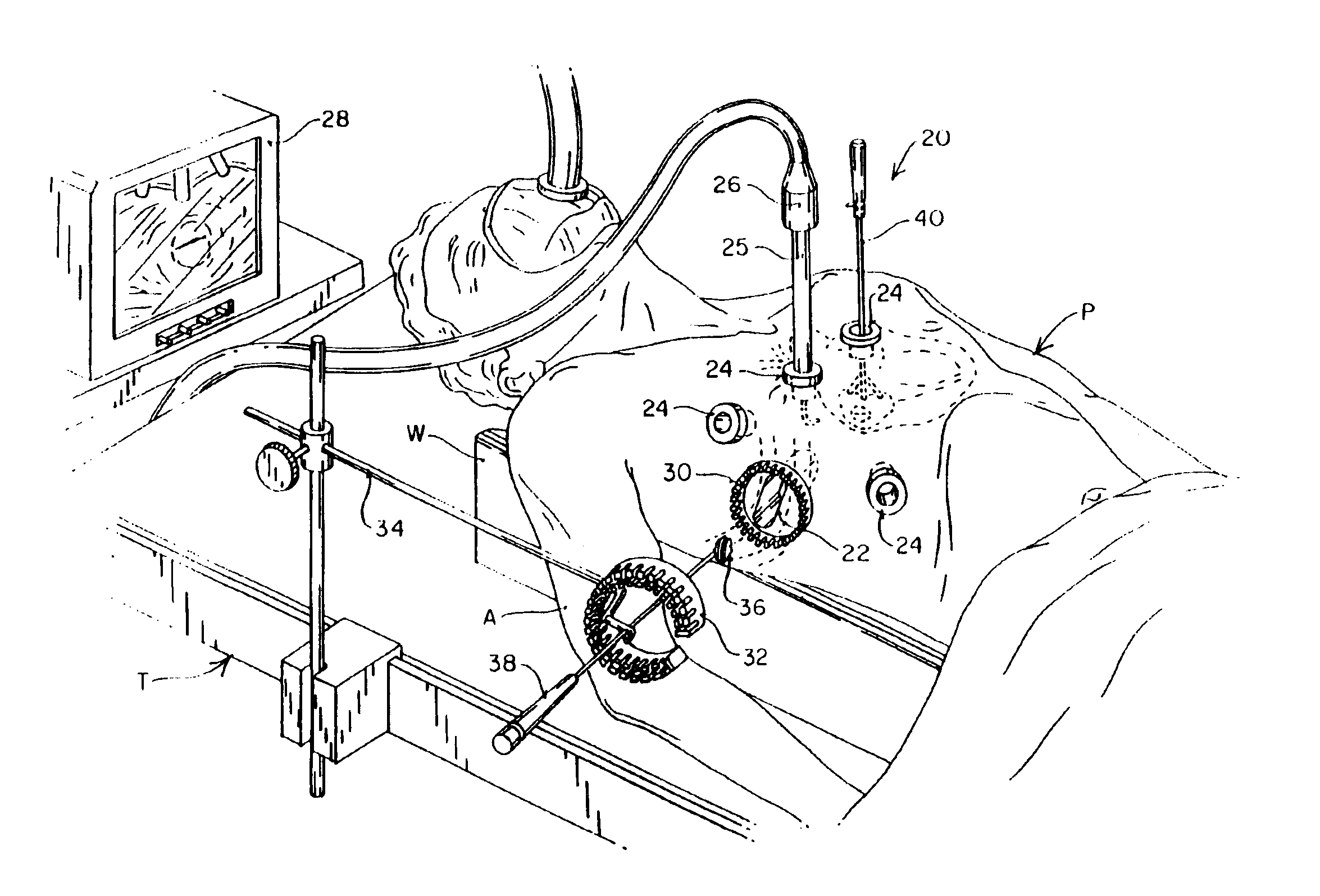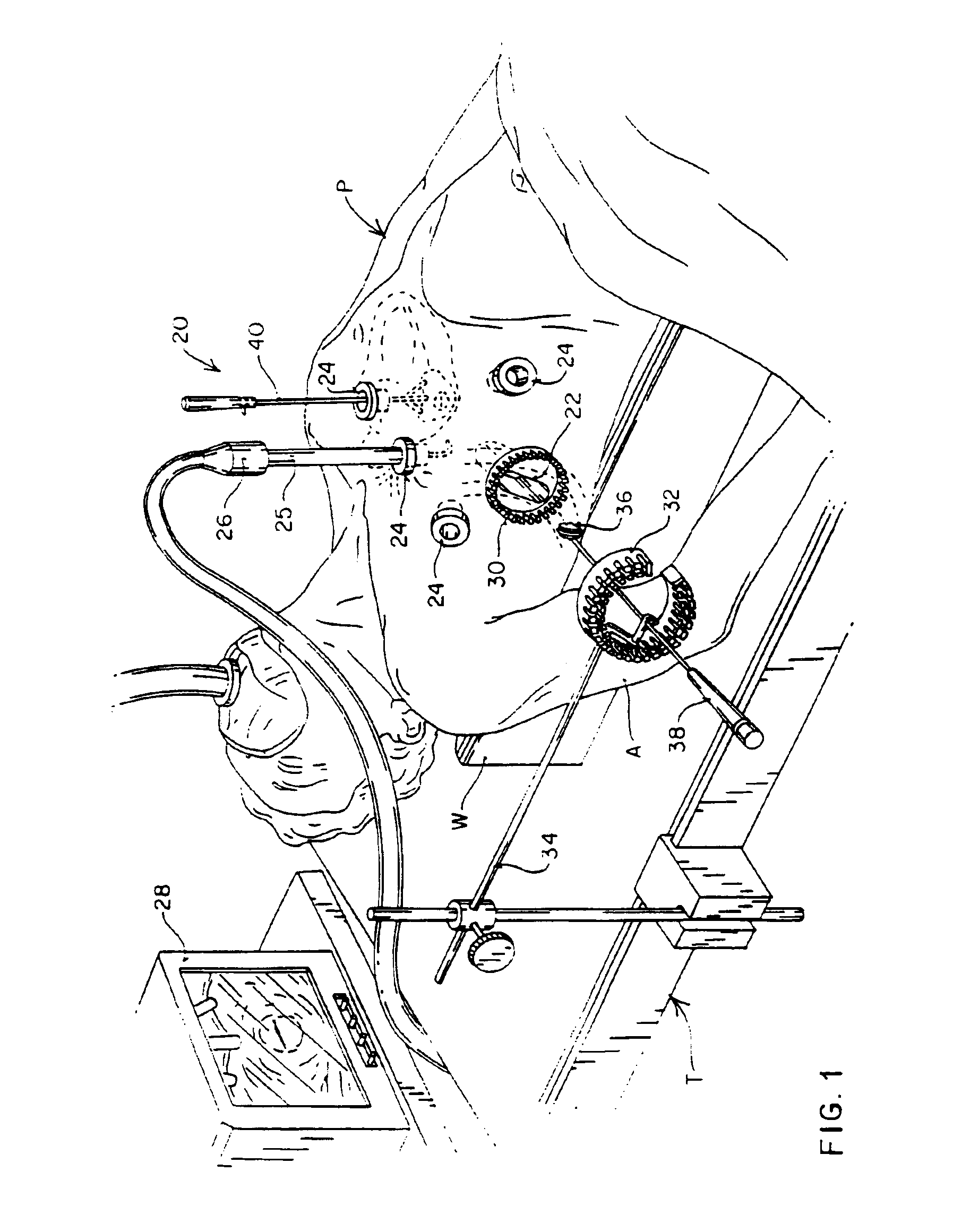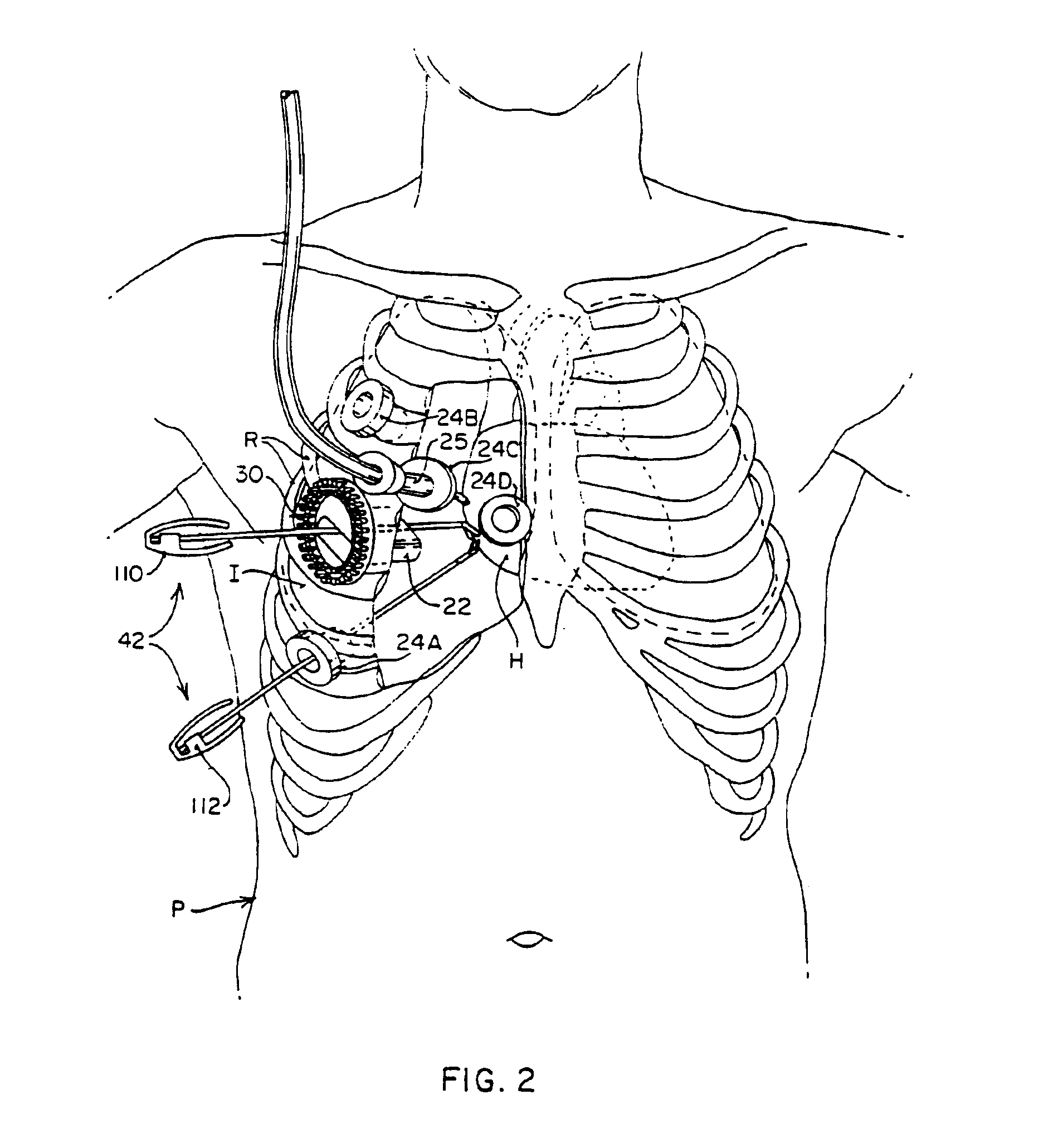Devices and methods for intracardiac procedures
a technology for intracardiac surgery and instruments, applied in the direction of surgical staples, surgical forceps, therapy, etc., can solve the problems of prolonged hospital stay, high degree of trauma, and significant risk of complications, so as to facilitate intervention, reduce trauma, reduce the risk of complications, and improve the effect of patient comfor
- Summary
- Abstract
- Description
- Claims
- Application Information
AI Technical Summary
Benefits of technology
Problems solved by technology
Method used
Image
Examples
Embodiment Construction
[0109]The invention provides methods and devices for performing surgical interventions within the heart or a great vessel such as the aorta, superior vena cava, inferior vena cava. pulmonary artery, pulmonary vein, coronary arteries, and coronary veins, among other vessels. While the specific embodiments of the invention described herein will refer to mitral valve repair and replacement, it should be understood that the invention will be useful in performing a great variety of surgical procedures, including repair and replacement of aortic, tricuspid, or pulmonary valves, repair of atrial and ventricular septal defects, pulmonary thrombectomy, removal of atrial myxoma, patent foramen ovate closure, treatment of aneurysms, electrophysiological mapping and ablation of the myocardium, myocardial drilling, coronary artery bypass grafting, angioplasty, atherectomy, correction of congenital defects, and other procedures in which interventional devices are introduced into the interior of t...
PUM
 Login to View More
Login to View More Abstract
Description
Claims
Application Information
 Login to View More
Login to View More - R&D
- Intellectual Property
- Life Sciences
- Materials
- Tech Scout
- Unparalleled Data Quality
- Higher Quality Content
- 60% Fewer Hallucinations
Browse by: Latest US Patents, China's latest patents, Technical Efficacy Thesaurus, Application Domain, Technology Topic, Popular Technical Reports.
© 2025 PatSnap. All rights reserved.Legal|Privacy policy|Modern Slavery Act Transparency Statement|Sitemap|About US| Contact US: help@patsnap.com



